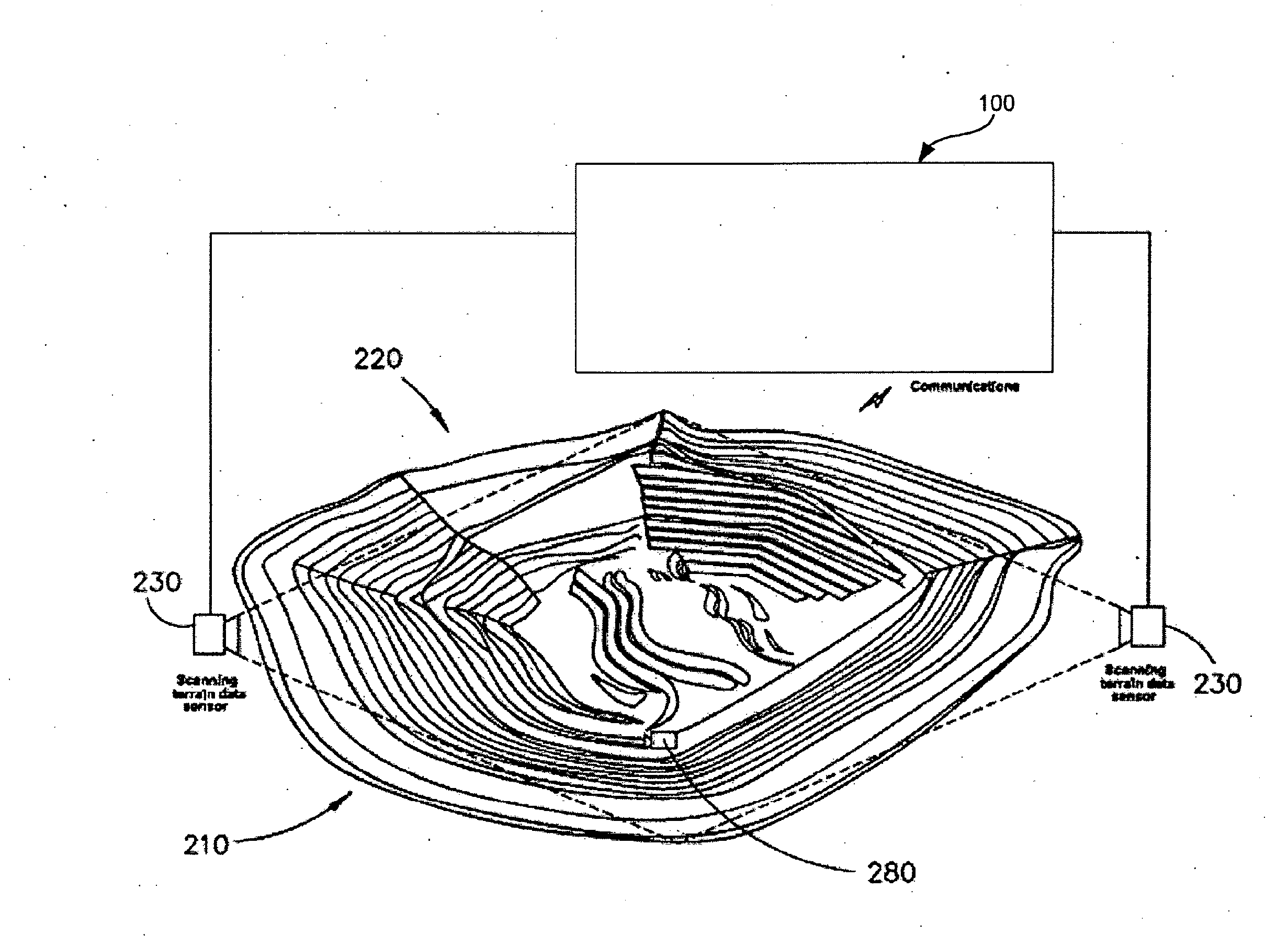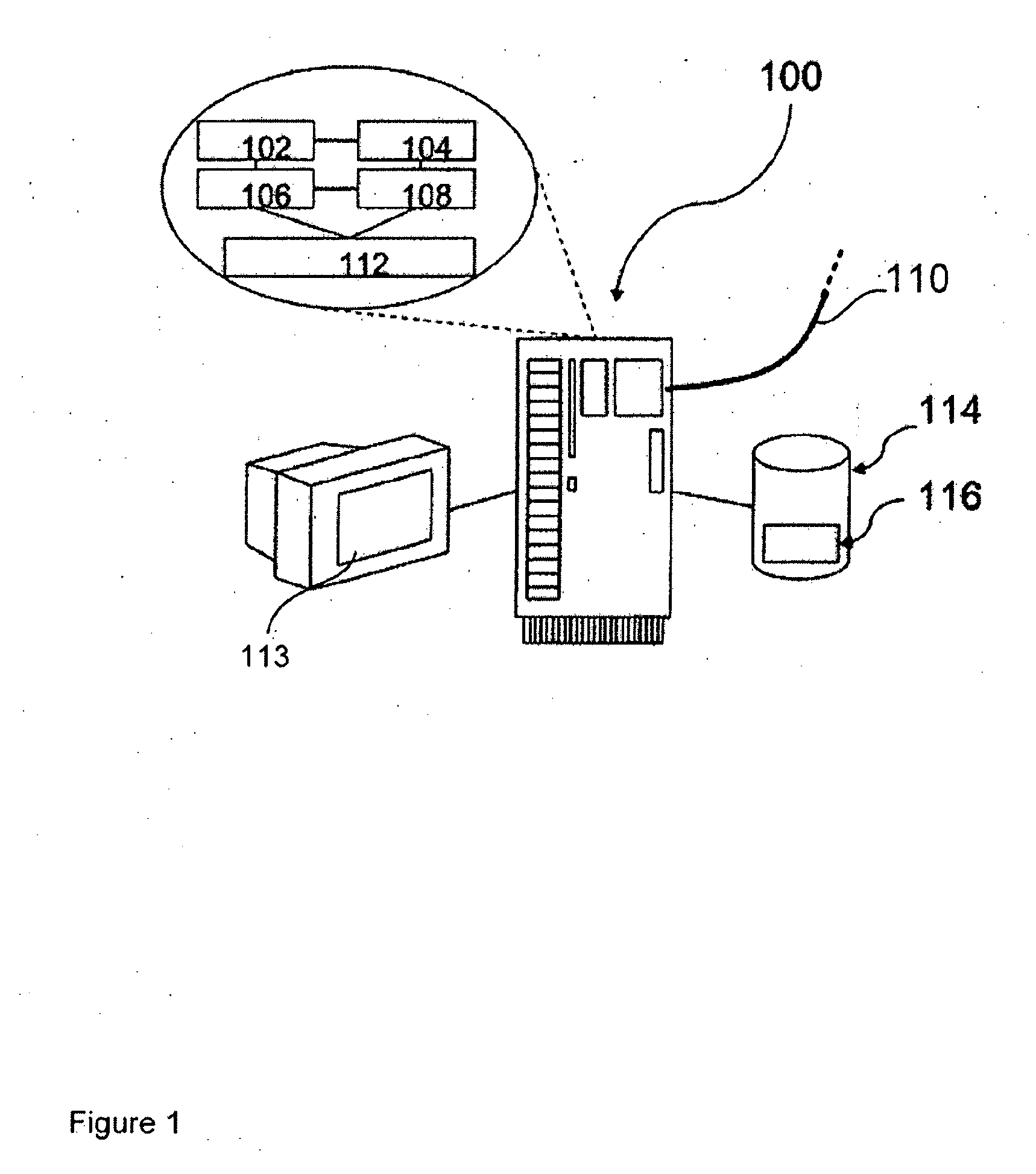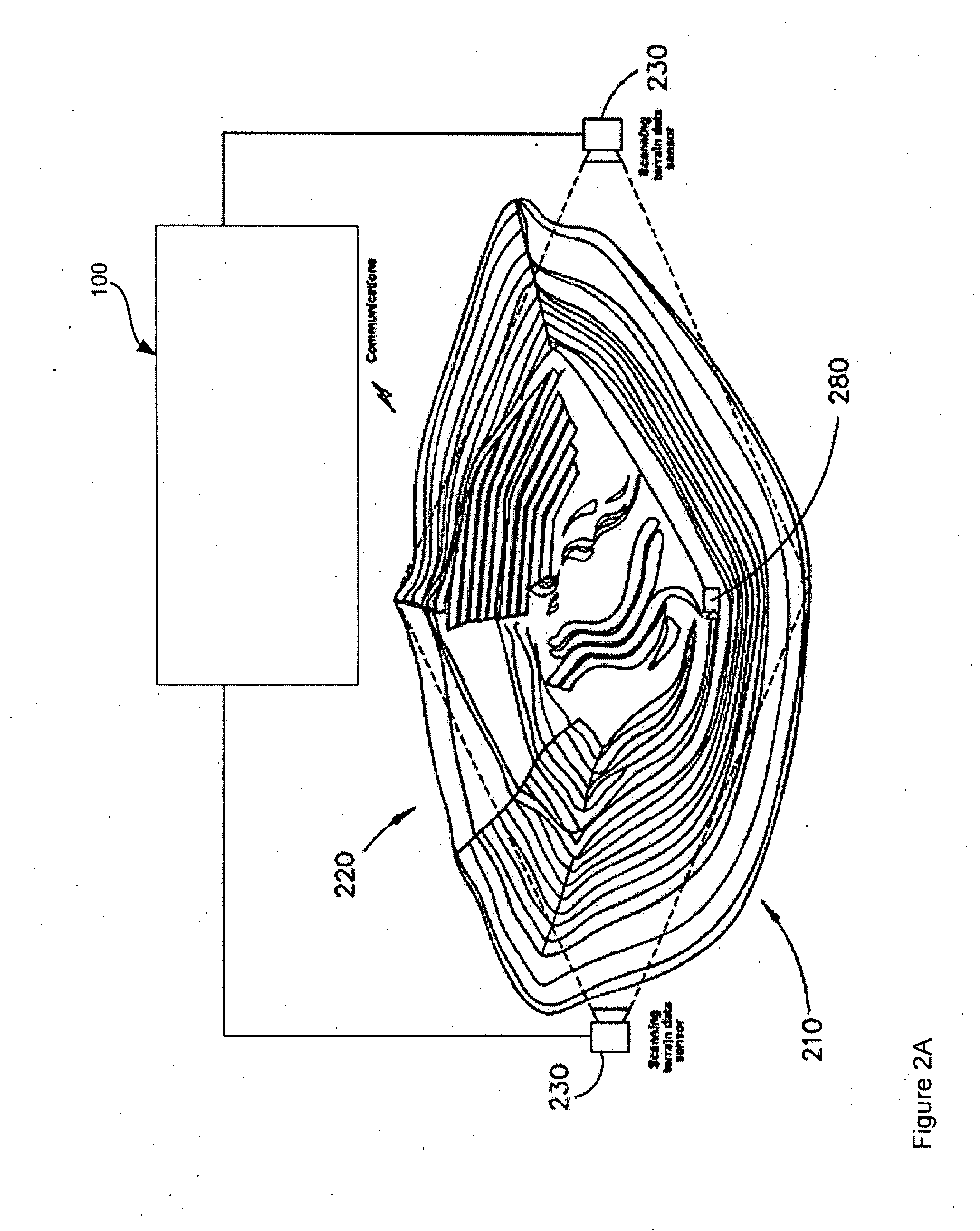Method for large scale, non-reverting and distributed spatial estimation
a spatial estimation and large-scale technology, applied in the field of large-scale spatial field estimation, can solve the problems of mainly bringing computational costs, difficult to create large-scale consistent, integrated, and regarded as a computationally expensive techniqu
- Summary
- Abstract
- Description
- Claims
- Application Information
AI Technical Summary
Benefits of technology
Problems solved by technology
Method used
Image
Examples
Embodiment Construction
[0062]In mining broad top-level maps may be required and in addition there may be a requirement for fast ‘local space fusion’. A top-level map means a broad scale, high quality, globally consistent map, which may be built from as much sensor data as possible. Local space fusion means allowing local units e.g. vehicles or mobile sensor devices to quickly sense and update local maps, optionally in real-time, and then share these updates through local links to picture compilation nodes. Providing a hierarchy to the mine picture compilation system allows this blend of fast, local operation as well as broad scale, quality terrain mapping.
[0063]The distributed system described herein facilitates the creation of both top level maps and local space fusion. Distributed sensing and estimation means that spatial field observations and measurements are fused locally and communicated through a distributed network. Thus many distributed sensor sources can be consistently fused into a single mine ...
PUM
 Login to View More
Login to View More Abstract
Description
Claims
Application Information
 Login to View More
Login to View More - R&D
- Intellectual Property
- Life Sciences
- Materials
- Tech Scout
- Unparalleled Data Quality
- Higher Quality Content
- 60% Fewer Hallucinations
Browse by: Latest US Patents, China's latest patents, Technical Efficacy Thesaurus, Application Domain, Technology Topic, Popular Technical Reports.
© 2025 PatSnap. All rights reserved.Legal|Privacy policy|Modern Slavery Act Transparency Statement|Sitemap|About US| Contact US: help@patsnap.com



